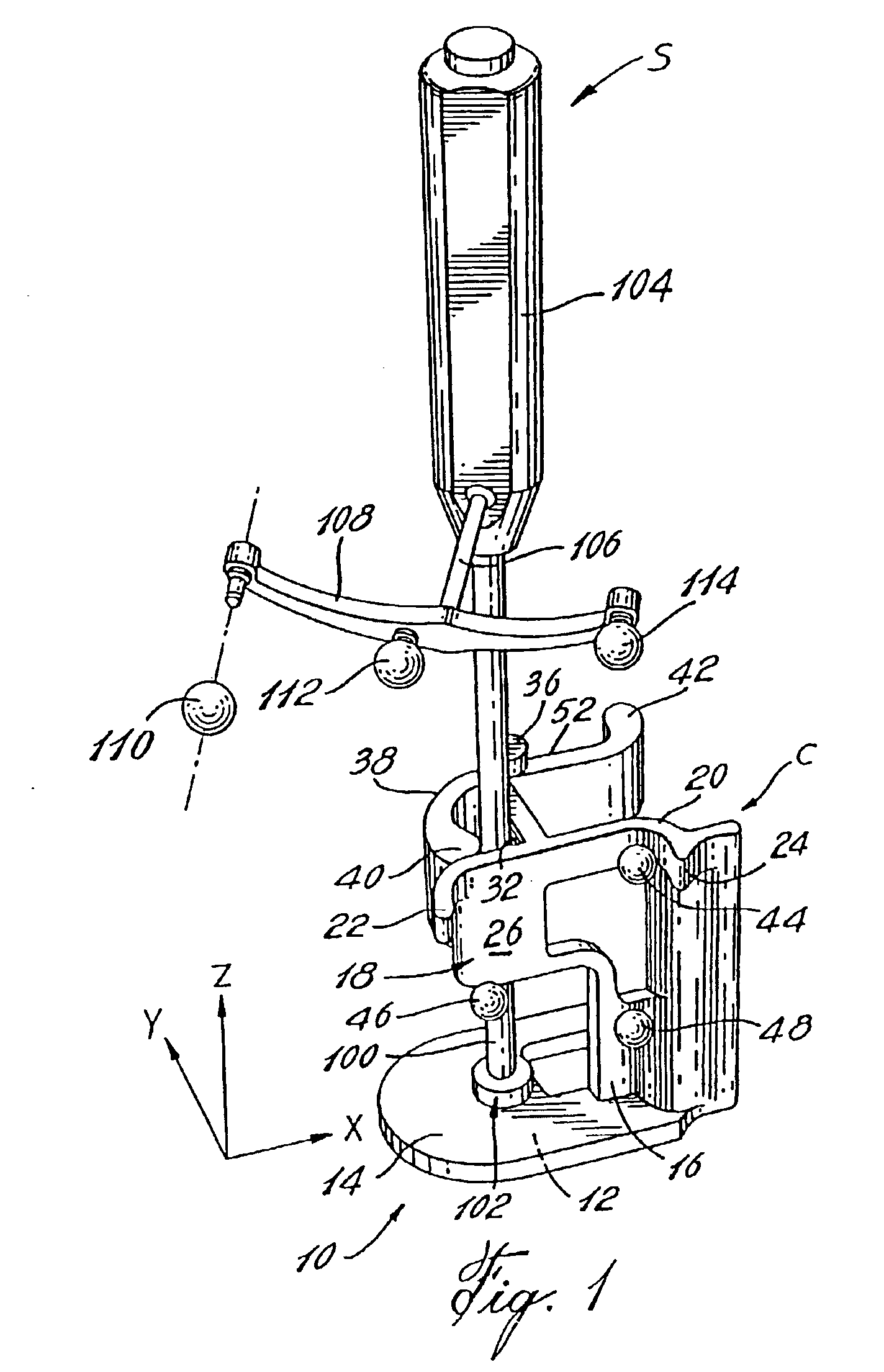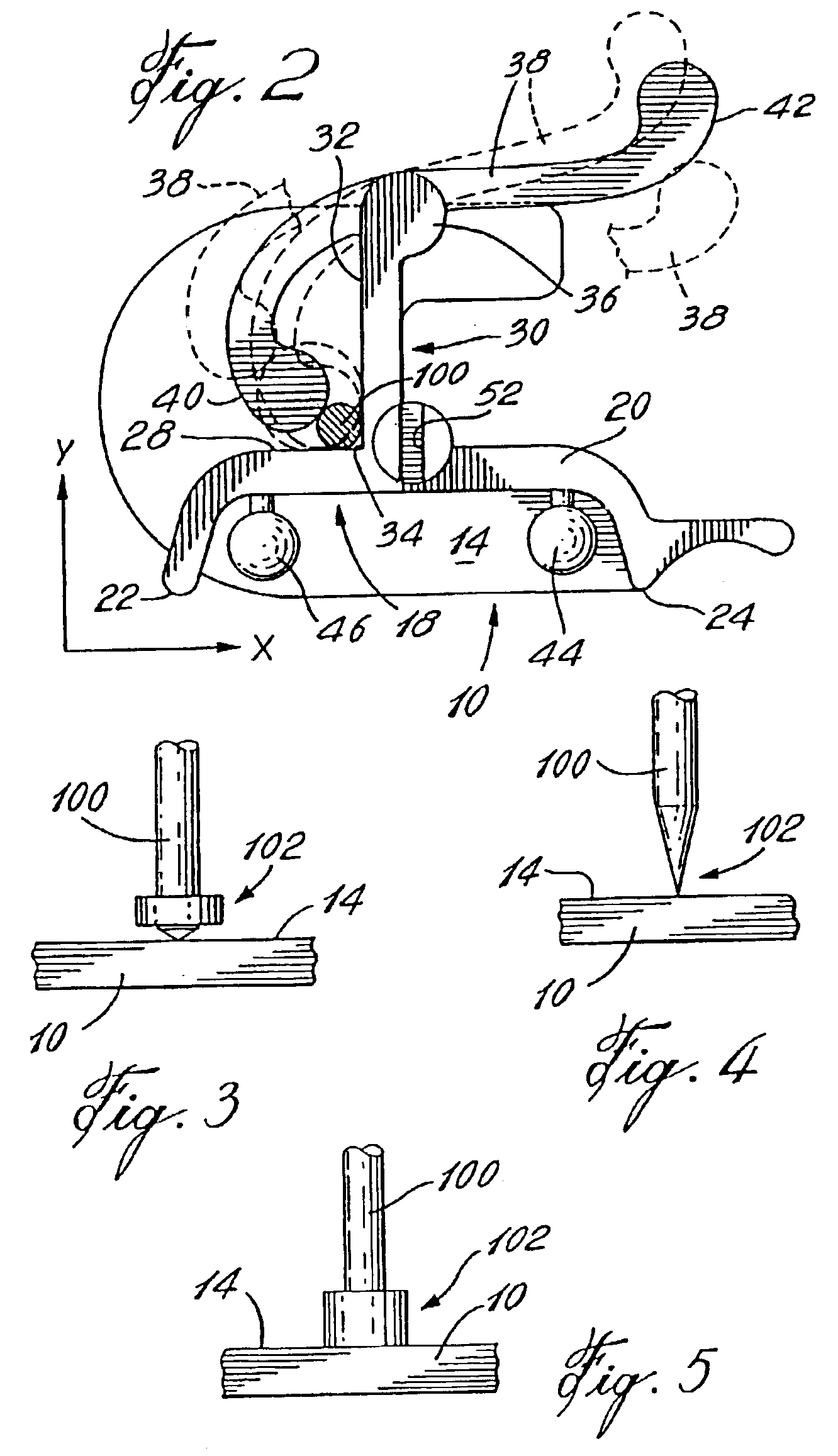Automatic calibration system for computer-aided surgical instruments
a computer-aided surgery and automatic calibration technology, applied in the direction of testing/calibration of speed/acceleration/shock measurement devices, sensors, diagnostics, etc., can solve the problems of inexperienced users, dramatic consequences of misrepresentation of instruments with respect to patients' bodies, and the required calibration maneuver may take a few minutes to an inexperienced user, etc., to facilitate calibration, facilitate use, and ensure accuracy
- Summary
- Abstract
- Description
- Claims
- Application Information
AI Technical Summary
Benefits of technology
Problems solved by technology
Method used
Image
Examples
Embodiment Construction
[0023]Referring to FIG. 1, there is shown a calibration base C supporting a surgical instrument S. The calibration base C comprises a base plate 10 having a bottom flat surface 12. The base plate 10 also defines an XY plane 14. For clarity purposes, XYZ axes have been added to the drawings in order to clearly identify the space orientation of planar elements. For instance, the XY plane 14 is planar with respect to the XY axes provided therewith. Also, it is noted that the calibration base C generally consists in a material which must be able to sustain several cycles of autoclave sterilization, such as a stainless steel. Some elements of the calibration base C will require to be made of other materials and will be identified herein as such.
[0024]A vertical wall 16 extends perpendicularly from the XY plane 14 of the base plate 10. A first panel 18 projects from a top portion of the vertical wall 16 and shares a top edge surface 20 therewith. A first protrusion 22 and a second protrus...
PUM
 Login to View More
Login to View More Abstract
Description
Claims
Application Information
 Login to View More
Login to View More - R&D
- Intellectual Property
- Life Sciences
- Materials
- Tech Scout
- Unparalleled Data Quality
- Higher Quality Content
- 60% Fewer Hallucinations
Browse by: Latest US Patents, China's latest patents, Technical Efficacy Thesaurus, Application Domain, Technology Topic, Popular Technical Reports.
© 2025 PatSnap. All rights reserved.Legal|Privacy policy|Modern Slavery Act Transparency Statement|Sitemap|About US| Contact US: help@patsnap.com



